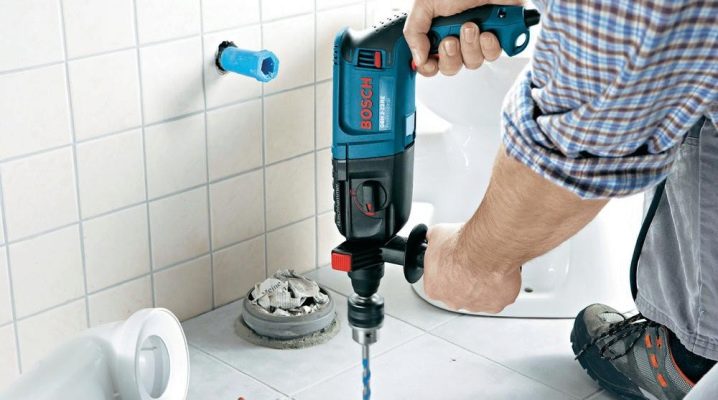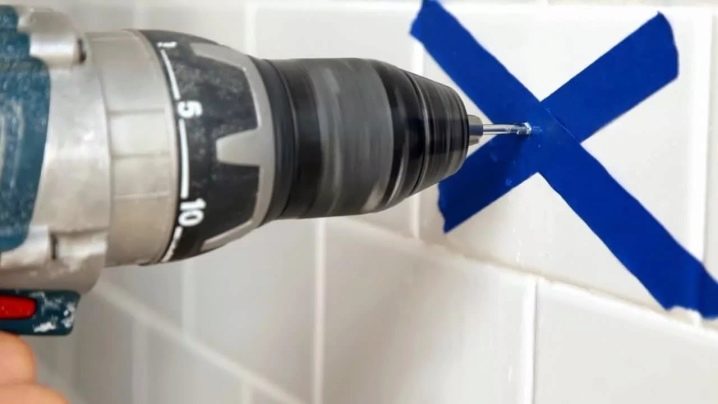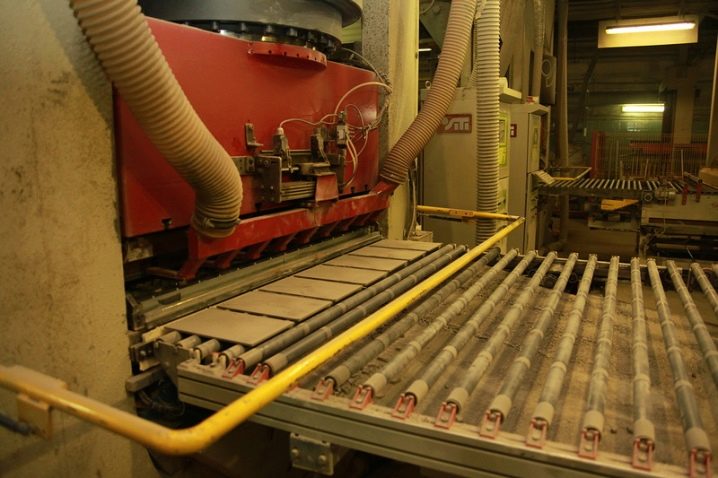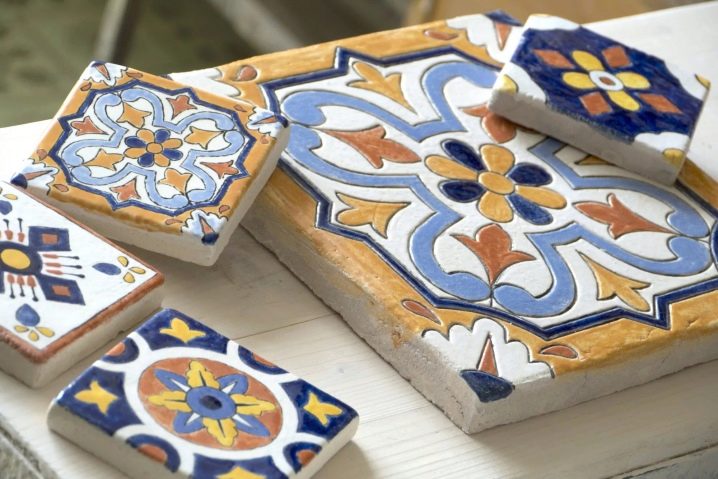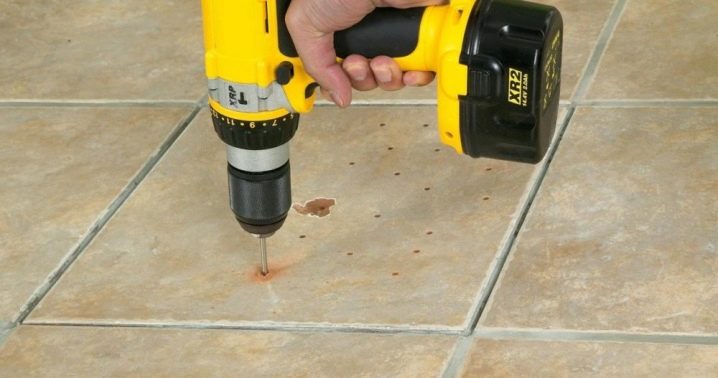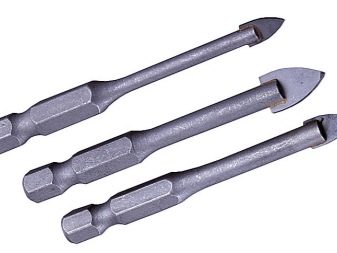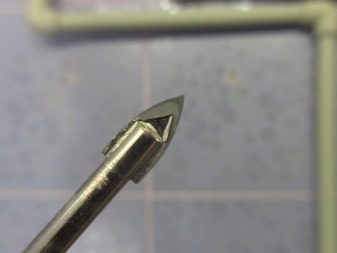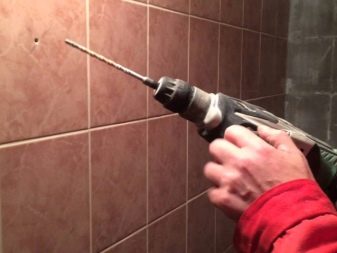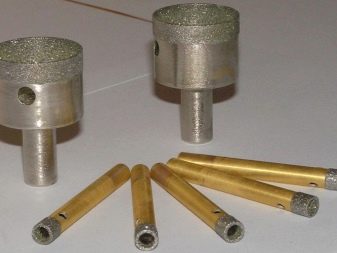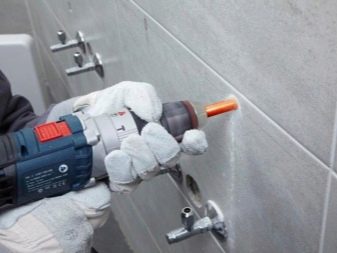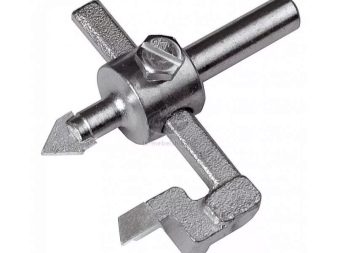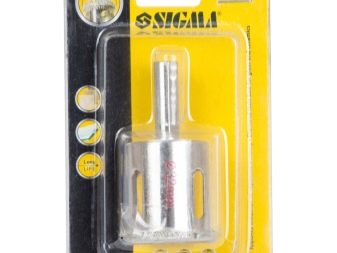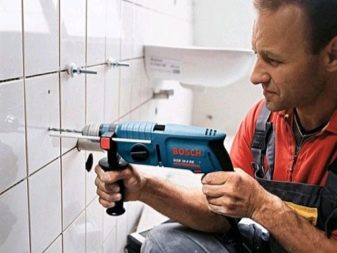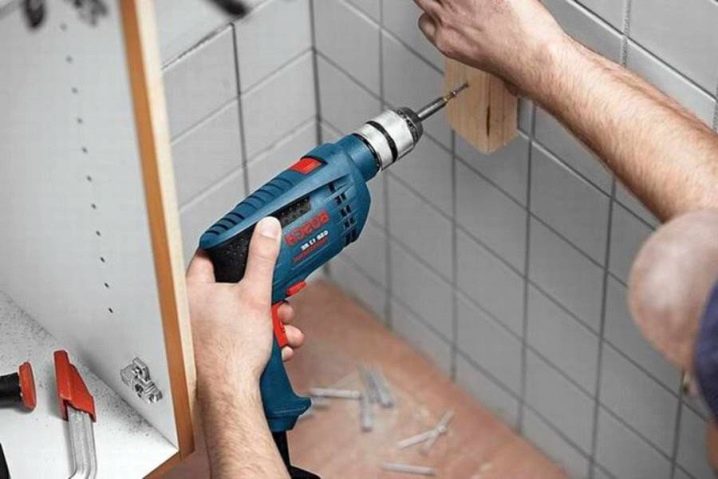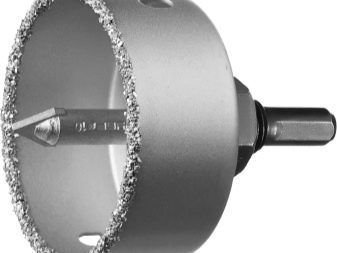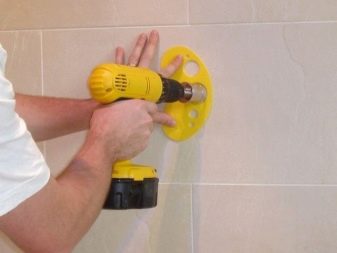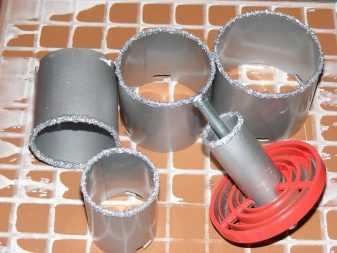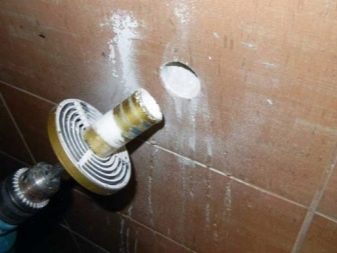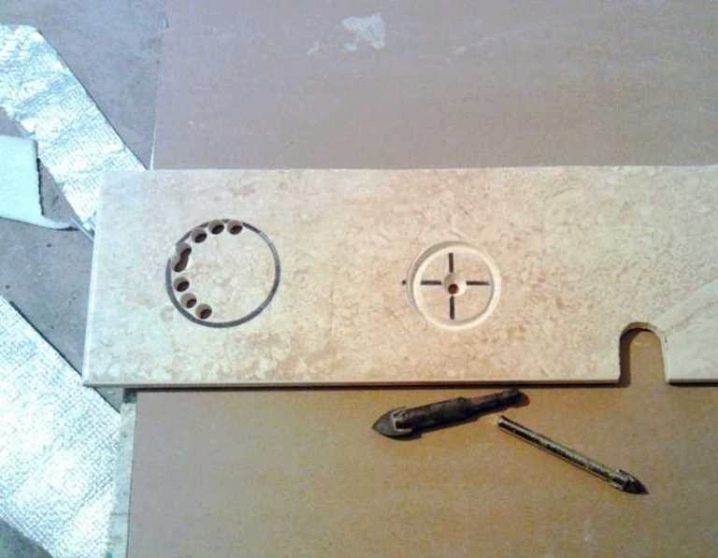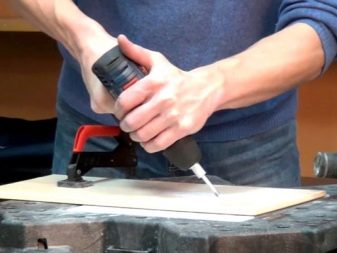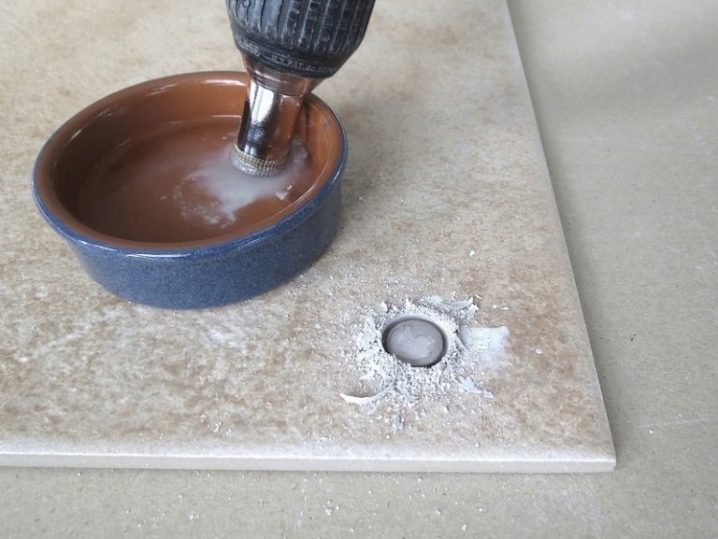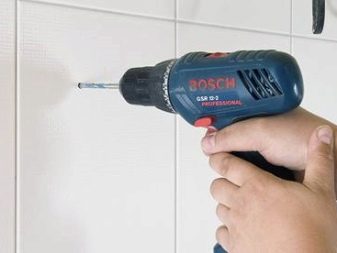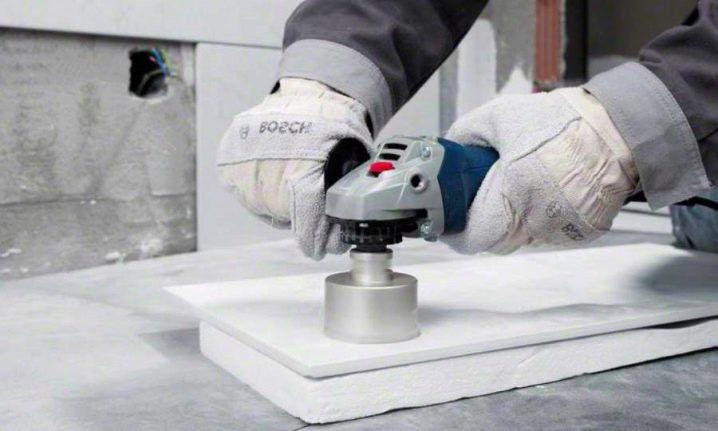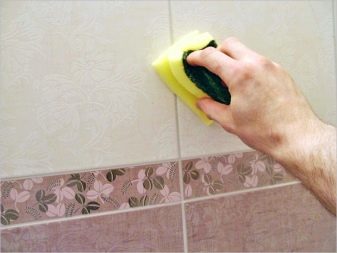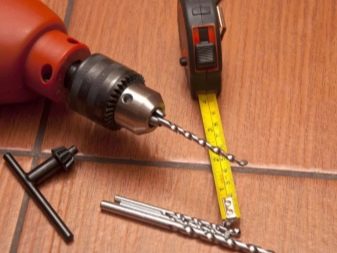How to drill tile?
The tile is a reliable and durable finishing material by means of which it is possible to decorate any interior of the dwelling. It is made from mixtures of clay of various additives subjected to firing at high temperature. This gives it strength, improves performance and quality characteristics.
During the finishing work, it is necessary to drill tiles: this is necessary for the formation of different holes that simplify the installation work of certain components. The quality of the hole depends on the correct drill.
Special features
The tile is mainly used for wall cladding, it is not able to withstand high loads and is inferior in thickness to its counterpart for floor finishing.Drilling this material without the formation of chips and cracks is a relatively complex process. Only the master can do this from the first time. This is due to several technical features of tiled products.
Hardness
After sintering, the clay is compacted, which does not make it possible to easily destroy the bonds between the components of the raw material.
For the formation of holes, it is necessary to use mechanisms whose hardness is much higher than that of ceramics. In this case, the processing should be carried out relatively neatly (at the optimum speed of the tool used).
Top smoothness
On top of the tile is covered with a special protective glaze, which prevents the destruction of the clay under the influence of moisture. The surface of the first drilling is quite difficult to drill, this can lead to the sliding of the working tool.
Solve this problem in various ways, among which the simplest is the formation of an entry point using a light strike and destruction of the upper layer.
Fragility
You need to drill the material very carefully and carefully: all the connections between the components are non-ductile and quickly collapse alongcertain lines. This may cause cracking.
Based on these properties, it can be said that the drilling of tiles should be carried out as accurately as possible and only using special mechanisms. This will allow to get an even end and will make the surface visually more pleasant against the general background of the lining.
Types of drills
The drilling of ceramic tiles can be performed after installation and immediately before gluing the fragment to the surface of the base. The modern market offers several types of tools that can be used to process such material. All types of similar products can be divided into several categories.
Spear
The working surface of this tool resembles a spear, so it is called spear. So they can drill a hole, the product is made of tungsten carbide. This material has a high hardness, unique performance, allows you to quickly and accurately drill holes.
The disadvantage is that the product has a limited lifespan and can drill only a few holes in the tile.
Pobeditovoe
Such a tool resembles the usual product for metal or wood. At the end of the device there is a special pozditovaya soldering, capable of carrying high loads. These tools are not specific: their main purpose is the drilling of concrete.
If you need to form several holes in the tile, they are the best option. Their cost is slightly lower than the spear-like counterparts. Good drill to fit 2-3 holes. If you need to make a hole in a tile already glued to the wall, then you will not have to change the tool: you can also use it to drill a dowel hole in the concrete frame.
Diamond
Such designs are made in the form of small cylinders, the upper surface of which is covered with diamond grit. Such a tool is obtained by sintering metal and single-piece diamonds of small diameter. For processing tile such drills are the best option. They withstand high loads, are suitable for materials of different hardness and thickness.
The disadvantage of diamond drills can be considered a relatively high cost, which is impractical for producing several holes.
Crowns and ballerinas
These tools are used for drilling holes in the tile under the mixer or water pipe. Technical crowns are a type of diamond drills, differ only in the increased diameter of the working surface.
Ballerina do not form a hole when drilling: they only remove the upper solid layer during a circular motion. They are recommended to be used when the tiles have not yet been fixed to the wall by means of tile glue.
Choosing drills
A tile is drilled when in a specific place it is necessary to install a round or semicircular shape with a certain diameter. The most common task is to drill the surface under the dowel, which is used as a support or fastener. There are also non-trivial tasks solved with the help of non-standard approaches and tools.
Small diameter
Making small holes is a major concern when using ceramic tiles. For such purposes use almost all types of drills considered earlier. Such tools allow you to form a round hole.
Their diameter can vary from 4-5 mm to 12-15 mm.. The size of the drill depends on the manufacturer of the product. There are modifications in which the diameter can vary in increments of 0.5 mm, other models are based on inches.
It is important to consider the units of measurement in order to choose the optimally comfortable and suitable option.
Large
Sometimes when working with ceramics, installation involves passing water or sewage pipes through the material. The diameter of such products is much larger than that of ordinary drills. Solve this problem with the help of crowns. Externally, they do not have a twisted surface, like a drill. Drilling is carried out at the expense of solid top layer, which is in contact with the tile. Depending on the material used in the manufacture of the crown can be divided into 2 groups: pobeditovye and diamond.
Pobeditovye crowns complement tipped out of the win. Such designs come in various sizes, they allow form holes up to 15 cm in diameter. It is easier, faster and more reliable to lay the pipeline, in the process of creating which use different types of pipes. The disadvantage of this tool is a limited service life.With the help of a crown, you can drill up to 20 holes, after which the top layer starts to wear out quickly.
Diamond crowns in a form are similar to pobeditovy analogs. However, here, as a cutting surface, small diamond chips are used, which are soldered to the frame. The diameter of the crowns can vary in a fairly wide range. On the market, you can find models for which this value can exceed 25 cm. But such products are used only by professionals who are professionally engaged in repair. This is due to the high price, which does not allow an ordinary buyer to purchase goods for disposable household use.
One of the universal tools for drilling holes of large diameter are ballerinas. They consist of a central tip, as well as a cutting tool that moves along a special bar. Their advantage is the fact that the specialist when carrying out finishing work can make a hole of non-standard diameter (which is not always possible with the help of crowns).
If it is not possible to purchase a crown for large holes, you can try to shape it using ordinary small-diameter drills.
To do this, on the tile surface draw a circle of the required parameter.Then along the line along the internal axis, many holes are drilled, which are located close to each other. Upon completion, you should carefully knock out the inside of the tile and smooth the ends with sandpaper.
Work principles
Drilling ceramic tiles is a relatively simple process. It should be done exclusively with the help of a quality tool from well-known manufacturers, whose products have a positive assessment of the masters. The quality of the hole directly depends on this: it should look look beautiful and be even.
How to choose a drill?
Processing tile can be carried out by several types of electric tools. The best option is a drill that allows you to solve several problems. When choosing such a device, it is important that it meets several basic requirements:
- It is preferable to use a drill, which is equipped with a function to change the speed. This reduces the risk of microcracks or splitting the material in half.
- Use a hammer drill to drill holes for pipes or sockets. possible if it allows you to turn off the hammer drill function,and also adjust the spindle speed. In this case, it turns into a regular drill, but only higher power.
- Preferably a cooling system and conductors. These attributes are optional, but professionals use these assistive devices. The cooling system is a special container with water, which is automatically fed to the end of the drill during its operation. Conductors are conventional suction cups that simplify leveling and fixing the drill on a smooth surface.
We control the process
Tile processing technology involves continuous monitoring of the process, as well as the state of the drill. To accurately drill a quality hole, you should follow some simple guidelines:
- Constantly cool the drill.. If this is not done, it may burn out. If you do not have an automatic water supply system, you can replace it with a regular bottle, in which several holes should be punched in the traffic jam. Periodically take out the drill and moisten it with liquid.
- Do not push hard on the drill. Excessive load may cause cracking or deformation of the drill.
- Do not use reverse mode when pulling. working tool. This approach will lead to the formation of chips on the upper surface of the tile. Sometimes this can cause cracking of the material.
- Try to keep the drill exactly at right angles. relative to the plane of the tile. If you have no experience, you can use special supports or clamps to simplify this procedure.
- Drill tile at the minimum speed of the drill. Try not to increase them during operation: this will lead to overheating of the drill or destruction of the material.
Useful tips
The algorithm for processing ceramic tiles with different drills is almost identical. There are some simple tips that will simplify the solution of this problem:
- Using crowns, they must be watered. This will reduce the temperature and extend the service life of the tool several times.
- If you drill tiles often, to simplify this operation, you should make or purchase a special pattern. It is a small board made of plastic or wood, inside which are cut several holes of different diameters.By placing this template in the right place, inserting a crown or a drill, you can more reliably fix the tool, not allowing it to move during operation.
- To prevent the drill from slipping, you should stick masking tape on the tile surface. The tool will be more firmly attached to the tape, which will allow forming the center of the future hole.
- Try to place all the holes in the seams between adjacent tiles. This will not only simplify drilling, but will not destroy the decorative surface of the tiles.
- If you use special drills for ceramic tiles, it is important to monitor the depth of their drilling. When the material is drilled not fixed, you can drill about 2/3 of the thickness, and everything else should be carefully knocked out. When wall drilling is necessary to ensure that the drill does not pass on the concrete. This significantly reduces the quality of the work surface or may render it unusable.
- Before starting work, it is advisable to soak the ceramic tiles in water for about 30 minutes. During this time, water will soften the material and make it more manageable for processing.
- Try to drill holes at a distance of at least 2-5 cm from the end of the tile.If it is necessary to make a hole especially close, keep in mind that such an approach can lead to chipping or cracking.
To make the process extremely simple, care should be taken in the work and patience.
Haste may cause material breakage.. It is important to follow safety rules. This will eliminate injury and allow to make holes in the process of workmanship.
Next, see a master class on drilling tiles.
